Domesticated Animals
Domesticated animals are species that have been selectively bred and raised in captivity by humans for various purposes, including food, work, companionship, and research. The process of domestication has occurred over thousands of years, resulting in changes to the physical, behavioral, and reproductive traits of these animals.
Key Points to Understand
- Origin: Domestication of animals began over 10,000 years ago, with early humans selectively breeding wild animals to create more docile and useful traits.
- Purposes: Domesticated animals serve various purposes, such as providing food (e.g., cows, chickens, pigs), labor (e.g., horses, oxen), companionship (e.g., dogs, cats), and products like wool and leather.
- Characteristics: Domesticated animals often exhibit physical and behavioral differences from their wild counterparts, such as reduced aggression, altered coat colors, and changes in reproductive cycles.
- Impact: The domestication of animals has had a significant impact on human civilization, shaping agriculture, transportation, and cultural practices.
Study Guide
To understand domesticated animals better, consider the following questions:
- What are the main reasons for domesticating animals?
- How have domesticated animals contributed to human society?
- What are some examples of domesticated animals and their specific uses?
- What physical and behavioral changes occur during the process of domestication?
- How has the domestication of animals influenced agriculture and food production?
By exploring these questions and understanding the history and impact of domesticated animals, you can gain a deeper appreciation for the close relationship between humans and the animals we have domesticated.
.◂Science Worksheets and Study Guides Third Grade. Hands-on Lab Skills/Science Inquiry - 3rd grade
Study Guide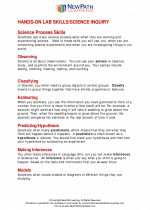 Hands-on Lab Skills/Science Inquiry - 3rd grade
Hands-on Lab Skills/Science Inquiry - 3rd grade  Worksheet/Answer key
Worksheet/Answer key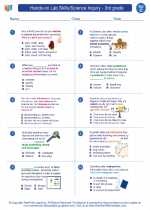 Hands-on Lab Skills/Science Inquiry - 3rd grade
Hands-on Lab Skills/Science Inquiry - 3rd grade  Worksheet/Answer key
Worksheet/Answer key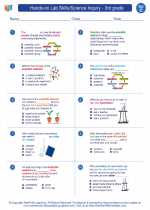 Hands-on Lab Skills/Science Inquiry - 3rd grade
Hands-on Lab Skills/Science Inquiry - 3rd grade  Worksheet/Answer key
Worksheet/Answer key Hands-on Lab Skills/Science Inquiry - 3rd grade
Hands-on Lab Skills/Science Inquiry - 3rd grade  Worksheet/Answer key
Worksheet/Answer key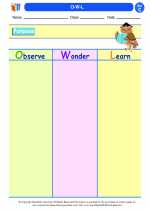 O-W-L
O-W-L  Vocabulary/Answer key
Vocabulary/Answer key Hands-on Lab Skills/Science Inquiry - 3rd grade
Hands-on Lab Skills/Science Inquiry - 3rd grade  Vocabulary/Answer key
Vocabulary/Answer key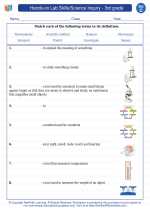 Hands-on Lab Skills/Science Inquiry - 3rd grade
Hands-on Lab Skills/Science Inquiry - 3rd grade 

 Worksheet/Answer key
Worksheet/Answer key
 Worksheet/Answer key
Worksheet/Answer key
 Worksheet/Answer key
Worksheet/Answer key
 Worksheet/Answer key
Worksheet/Answer key
 Vocabulary/Answer key
Vocabulary/Answer key
 Vocabulary/Answer key
Vocabulary/Answer key

The resources above cover the following skills:
Science as Inquiry and Process: A student should understand and be able to apply the processes and applications of scientific inquiry. A student who meets the content standard should:
Develop an understanding of the processes of science used to investigate problems, design and conduct repeatable scientific investigations, and defend scientific arguments.